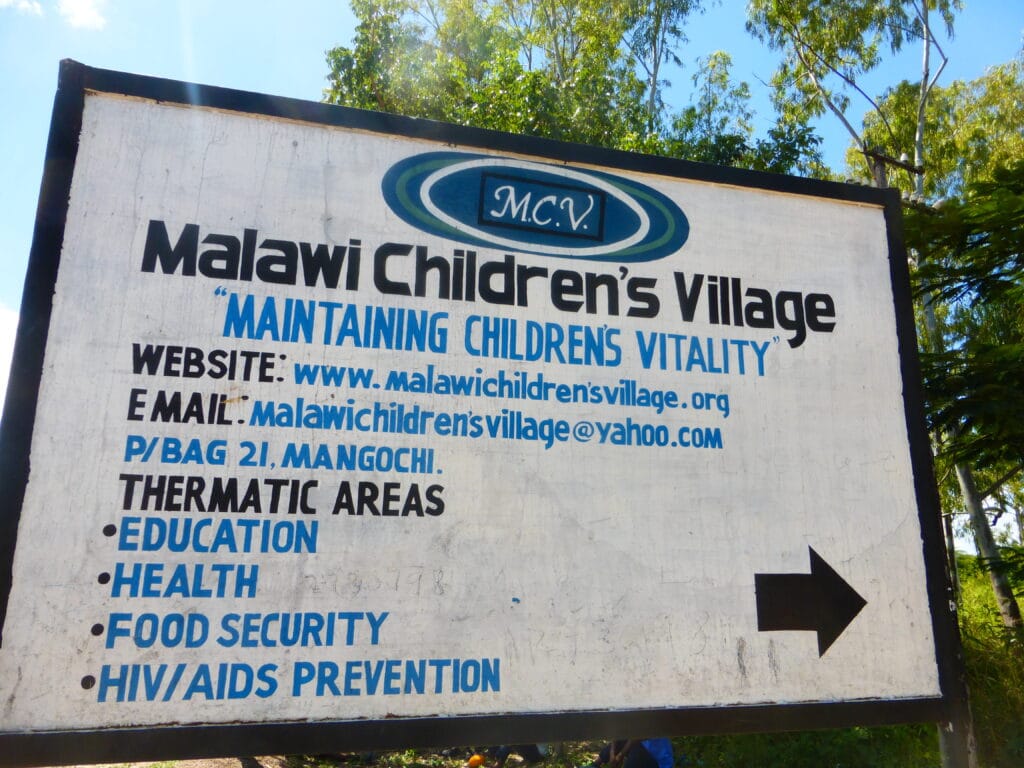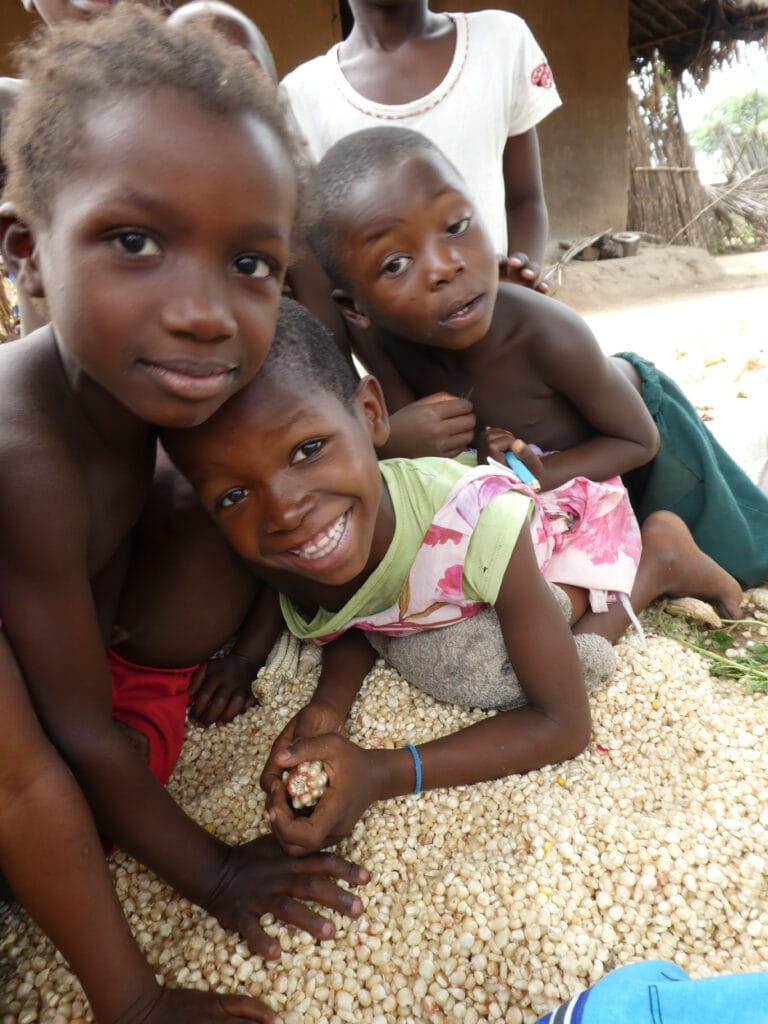History of MCV Part 1 of 5
Last year was the 25th year of Malawi Children’s Village. In recognition of this landmark, we would like to share MCV’s history which will be told as a five-part series. Enjoy!

Dr. Kevin Denny had been a Peace Corps Volunteer in the Mangochi District of Malawi working on a tuberculosis public health program from 1964-1966. During his Peace Corps service he met and became friends with Mr. Chakunja Sibale, who became a Malawi clinical officer in the Mangochi District after studying in Edinburgh and managing several international health projects. Their friendship deepened over time. Shortly after the HIV AIDS crisis became a worldwide horror in the mid 1980’s, they began discussing what they could do to help the children of Malawi.
AIDS was devastating Malawi and resulted in more and more children growing up without one or both parents. But it was just one of many diseases, including the scourge of malaria, tuberculosis, bilharzia, and a host of other diseases, causing nearly 10% of children born in Malawi to become orphans before their first birthday. In the mid-1980s, Mr. Sibale and Dr. Denny began talking about what they might do to help the orphan children. They knew they could not serve all the children of Malawi, but they were determined to make a difference to the orphan population in the 37 villages within a defined area of the Mangochi district.
These 37 villages had a total population of approximately 30,000 citizens. This included roughly 2,200 orphans and many otherwise vulnerable children (OVC’s). There were often as many as 6-7 orphans living together with their grandparents. With the increasing AIDS crisis, the number of orphans in these villages would soon soar to about 3,000 within the next five years.
In the entire country of Malawi, the age population density shows that, in the MCV Catchment area, the age group 0-17 accounts for about 50% of the total population, roughly 15,000 children. Because we know that about 3,000 of these are orphans or otherwise vulnerable children, roughly 20%, one in five of all children in this MCV area population, are orphans being raised by grandparents, other relatives, or loving village neighbors. These are staggering numbers. [NOTE: comparative numbers in USA: 443,000 “orphans” (those in or seeking foster care) out of population of 360 million = 0.12% of population; % of all children in USA in or seeking foster care = 0.68%]

THE BEGINNING
With these realities so shocking, Dr. Denny and Mr. Sibale decided something must be done. They dreamed of a program in this rural area that would give hope to the roughly 3,000 orphaned children. At best the program would evolve into a truly life-enriching program for these orphans. They envisioned a kind of program for these children that would most likely to succeed – a program that is village centered, administered by Malawians, and would incorporate many facets of life in these 37 villages ― a program that would truly give these children a good chance at a decent and healthy life. At a minimum, it would include free education for the children through secondary school and possibly university scholarships, health care in the villages specifically focused on the welfare of the children involved, food and clothing guarantees, and decent housing during the frequent drought or flood times.
They would call this project the Malawi Children’s Village (MCV). Mr. Sibale would be the chief administrator, and Dr. Denny would contact a small group of returned Peace Corps Volunteers who had served in Malawi during the initial years of the Peace Corps, asking them for their financial and voluntary support. The volunteers responded, and the MCV dream began modestly but with great hope in 1996.
These two MCV pioneers began researching the local conditions around the Mangochi area. They secured property along the shores of Lake Malawi and began construction of the first two buildings for what would become known as the MCV Campus. They insisted from the beginning that all structures on campus would be for services rendered and NOT for a resident orphanage. The fundamental belief was that all orphans would remain in their village, be cared for by village families, and overseen by two adult volunteers, chosen by the village chief. These volunteers, coordinating with the MCV staff, would monitor the orphans health and wellbeing.
Funding, of course, was a priority. Dr. Denny recognized the need for an American organization that would generate funding for MCV. In 1997 he called a group of his late 60’s Malawi Peace Corps friends to a meeting in Boston. It was the first meeting of what would become the US MCV Foundation Board. The initial Board included Garry Prime, a former volunteer school teacher, and Mike Hill, Terry Liercke, and Richard Glazer, all volunteers in the Tuberculosis/Public Health program. During the first six months of putting together and organizing the project, Garry Prime agreed to sponsor Mr. Sibale, who became the Project Director full-time in June 1997.
The program began with 36 villages identified in the Mangochi area. A survey at the time revealed that these villages had a combined number of approximately 30,000 residents. The survey also identified a minimum of 2,200 orphans, a number that would increase to 3,000 in the coming years.
Mr. Sibale met with the chiefs of these villages. With the assistance of the chiefs, they identified two volunteers from each village who agreed to look after the needs of the orphan children in their village. Once these 72 volunteers were chosen, they had a series of monthly training sessions with Mr. Sibale and his wife, Faith, who was a registered nurse and would later become the clinical provider for the MCV health clinic.
The top priority in 1997 was to address the needs of babies born to a parent or parents who had died from HIV AIDS. In Malawi, as in so many other developing nations, an infant becoming an orphan is a life-threatening event. The first major project at MCV, therefore, was to secure some land, which Mr. Sibale purchased for MCV. On this land in 1997 the first building was built as a nutritional rehab center that would house a small group of seriously malnourished infants whose mothers had died and who desperately needed nutritional support. It was a modest building including a kitchen, sleeping quarters, and a small office area for the project.
This infant nutritional center was completed in 1998 and soon began caring for 11 severely malnourished infants. A small staff of infant care workers were hired and trained and supervised by Faith Sibale. Not all the children survived, but many children did survive and would receive the benefits of MCV for the rest of their young lives.

THE EARLY YEARS
The next few years were a time of active physical development, always focusing on the support system for the orphans and OVCs. Thanks to the generosity of the MCV Foundation’s fundraising results, construction began on the guesthouse and the library. The guesthouse would become a critical facility for housing overseas volunteers coming to assist for short time periods, and the library foresaw the need to nourish the minds of the orphans as well as their bodies. A soccer field and a netball field were built, and an American Rotary Club provided funding for a lake water system and a water storage tower for what was now becoming the MCV Campus.
Training continued for the 70 or so village volunteers, all receiving an MCV Volunteer shirt and a bicycle, with an agreement to replace the bike tubes when needed. None of the volunteers, of course, had automobiles, and transportation by reliable bicycle was considered a luxury. Monthly meetings were (and still are) held to continue training for the village volunteers and attendance is usually 100%. There was some question whether these volunteers would lose interest or not be active, but five years later more than 85% of the original volunteers were still doing important tasks. They were the important “cornerstones” of the village-based program.
In these early years, a small staff was formed: Felix Chirombo, who would become the MCV director when Mr. Sibale retired years later; Monica Msosa, a community health nurse, was hired to work with Faith Sibale; and Esnath Phiri was hired as an outreach field worker. It was a small but devoted staff.
Surveys showed the orphan population in MCV’s defined area increasing from 2,200 orphans in 1997 to 2,910 in 1999.
Stay tuned for the rest of the history to be posted soon on our website.